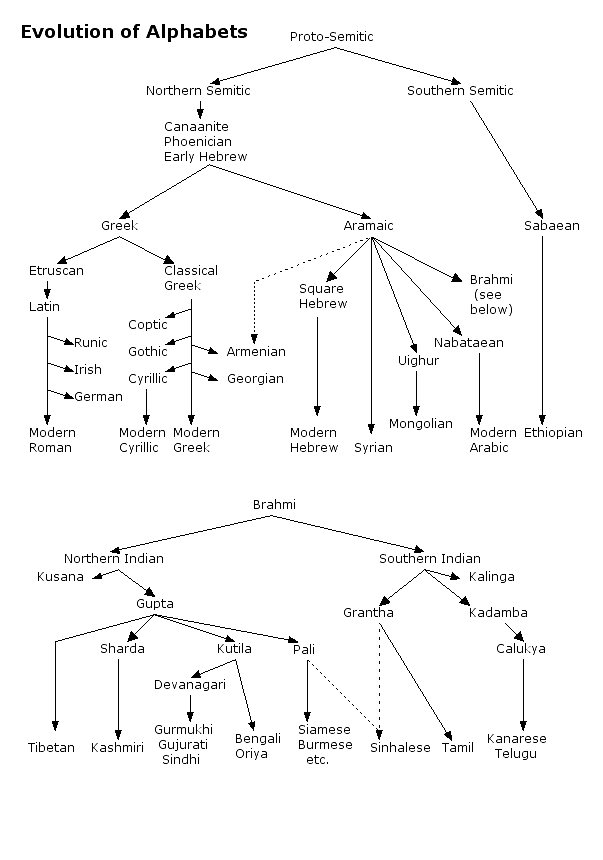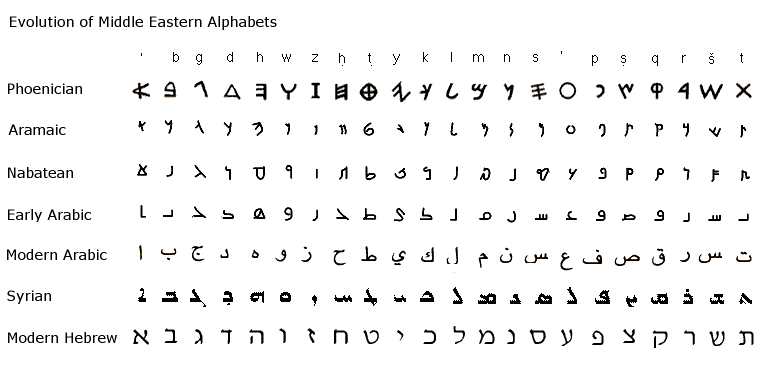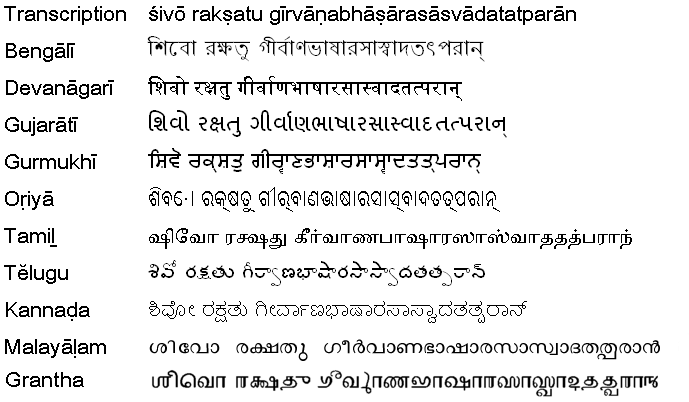Dr. C. George Boeree
All the letters were for consonants, which is reasonable for Semitic languages like Phoenician, Hebrew, Arabic, and even Egyptian. Even aleph and ayin actually represent the glottal sounds that preceded the A's. Greek (and most other languages) desperately need to represent vowels as well, so they took a few of the consonants they didn't need, and turned them into vowels -- aleph being the obvious example. They then added a few symbols of their own to represent extra sounds they needed. Three unused letters were retained in the Greek numbering system.
The Phoenicians, like the Hebrews and Arabs today, wrote from right to left. The Greeks originally did the same, then changed to a system where they changed direction every line, and finally to the present system of left to right. This has passed down to all the modern European alphabets.
The Latin alphabet, ancestor of most western European alphabets, is derived from the Greek, but was also influenced by the nearby Etruscan version of the alphabet. Over the centuries, extra letters were invented by varying older ones, or reintroducing Greek letters such as K and Y. It wasn't until the middle ages that small letters came into being, usually based on more cursive versions of the capital letters.
The alphabets of south and southeast Asia are all derived from the Brahmi alphabet, which in turn is loosely based on the Aramaic. With a far greater number of consonants, the ancient Indians created many of their letters, and organized them phonetically. The creativity continued as the idea moved eastward, and many of the later alphabets bear little resemblance to the earlier ones (see below).
Another way in which alphabets have developed involves the creativity of one or two specific inventors. Examples incluid the pre-cyrillic alphabet glagolitic, and the alphabets for Armenian and Georgian:
The only independently invented "true" alphabet is the beautiful Korean hangul. One very noticable feature is that the letters are arranged to fit inside a "box". For example, la Korean word for honeybee (kkulbeol) is written as 꿀벌, not ㄲㅜㄹㅂㅓㄹ.
There are also a number of syllabaries (where each symbol represents a syllable rather than a single phoneme) that were independently invented, including two for Japanese, one for Cherokee, and one for the Cree and Inuit of Canada.





Examples of the variety of Brahmi-derived scripts of south and southeast Asia:

